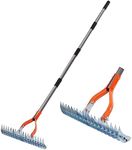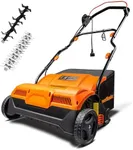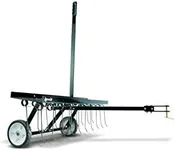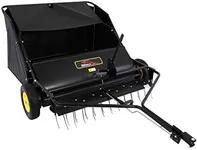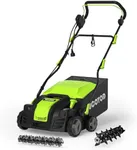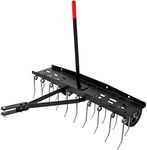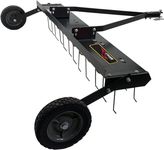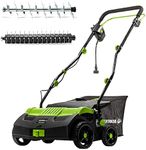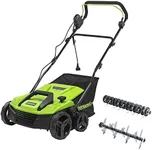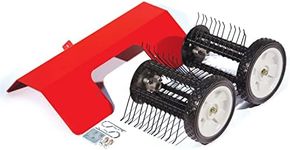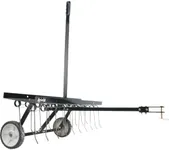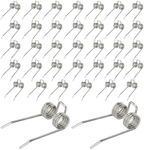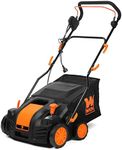Buying Guide for the Best Dethatchers
Choosing the right dethatcher is all about matching the tool to your lawn’s size, grass type, and how much thatch you need to remove. Dethatchers help keep your lawn healthy by pulling up the layer of dead grass and debris that can block water and nutrients. Before you buy, think about how often you’ll use it, how big your yard is, and whether you want a manual, electric, or gas-powered model. Understanding the key features will help you pick a dethatcher that makes the job easier and more effective for your specific needs.Type (Manual, Electric, Gas-Powered, Tow-Behind)The type of dethatcher refers to how the tool is powered and operated. Manual dethatchers are simple, hand-held tools that require physical effort and are best for small lawns or spot treatments. Electric dethatchers are powered by plugging into an outlet or using a battery, making them easier to use for medium-sized lawns and less physically demanding. Gas-powered dethatchers are more powerful and suitable for large lawns or heavy thatch, but they are noisier and require more maintenance. Tow-behind dethatchers attach to a lawn tractor or riding mower and are ideal for very large areas. To choose the right type, consider your lawn size, your physical ability, and how much thatch you need to remove.
Working WidthWorking width is the width of the dethatching path in a single pass. A wider working width means you can cover more ground faster, which is helpful for large lawns. Typical widths range from about 12 inches for manual models to over 40 inches for tow-behind versions. For small lawns, a narrow width is fine and easier to maneuver. For medium to large lawns, a wider width saves time and effort. Match the working width to your lawn size and how quickly you want to finish the job.
Tine Material and DesignTines are the parts that dig into the lawn to pull up thatch. They can be made from metal or plastic, and their shape and flexibility affect performance. Metal tines are more durable and effective for thick thatch, while plastic tines are lighter and less aggressive, suitable for delicate lawns. Some dethatchers have adjustable or replaceable tines, which can extend the tool’s life. Choose tine material and design based on your lawn’s condition and how tough the thatch is.
Depth AdjustmentDepth adjustment lets you control how deeply the tines penetrate the soil and thatch layer. This is important because too shallow won’t remove enough thatch, while too deep can damage your grass roots. Most dethatchers offer several depth settings. For light thatch, a shallow setting is best; for heavy thatch, a deeper setting may be needed. Pick a dethatcher with easy-to-use depth adjustment so you can tailor the tool to your lawn’s needs.
Collection SystemSome dethatchers come with a collection bag or basket to catch the debris as you work, while others leave the thatch on the lawn for you to rake up later. A collection system saves time and cleanup effort, especially for small to medium lawns. However, for large lawns or heavy thatch, the bag may fill quickly and need frequent emptying. Decide if you prefer the convenience of a collection system or if you don’t mind raking up the debris afterward.
Weight and ManeuverabilityThe weight of the dethatcher affects how easy it is to push, pull, or transport. Lighter models are easier to handle, especially for small lawns or users who want less physical strain. Heavier models may be more stable and effective for tough jobs but can be harder to maneuver. Consider your own strength and the layout of your lawn—lots of curves or obstacles may require a lighter, more agile dethatcher.
